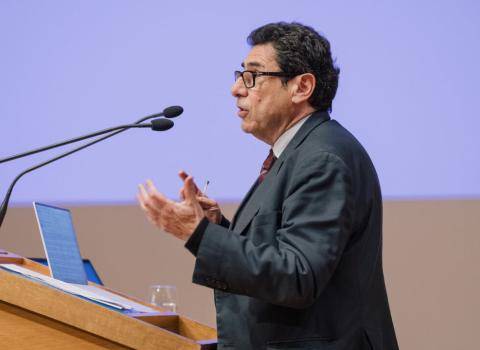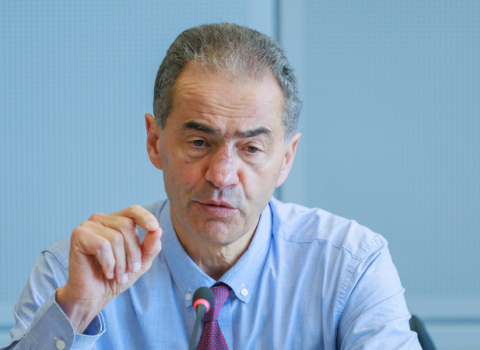Investors and entrepreneurs should keep their eyes on the commercial potential of research funded by the European Research Council (ERC), said ERC President, Jean-Pierre Bourguignon at the annual congress of the European Trade Association for Business Angels (EBAN) in Eindhoven.
In a session titled, ‘Science-Based Innovation and Investing in Disruptive Technologies’, Bourguignon explained to the crowd of investors and entrepreneurs, why the ERC and in particular, its Proof of Concept grantees, are worth watching.
European research at a glance
Research is a relatively recent responsibility taken on by the European Commission. By now, we have all heard the statistics; with just seven per cent of the world’s population, the EU accounts for 25 per cent of the world’s total research and innovation spending. It is responsible for approximately 32 per cent of the world’s scientific publications and holds one-third of the world’s patents.
But as Bourguignon pointed out to the audience, “When you are talking about EU top level science and innovation there are several gaps which need to be bridged.” When looking at performance of innovation systems in a global context, the US and South Korea both outperform the EU by 17 per cent, while Japan is 13 percent better. The EU share of the top one per cent most cited scientific publications is 29.8 per cent against a US share of 46.4 per cent and the EU spends 0.9 per cent less of its GDP on R&D than the US, 1.6 per cent less than Japan and 2.3 percent less than South Korea.
This highlights the fact that there are gaps are not only in the highest quality output, but also in the amount of money spent.
Role of the ERC
The ERC was set up in 2007 to support basic research on a broad front. “It is very difficult to be successful in innovation if you do not have an excellent research base,” Bourguignon said. And excellent research is what ERC has been after for the last 8 years. The organisation supports a multidisciplinary bottom-up approach in that researchers submit their proposals on any topic to evaluators whose sole criteria for awarding a grant is the quality of the science. So far, the record speaks for itself.
In 2014, two ERC grantees, Artur Avila and Martin Hairer, were awarded the Fields Medal. The same year, Jean Tirole, who was awarded ERC funding in 2009, won the Nobel Prize in Economic Sciences for his analysis of market power and regulation. A Nobel Prize in Physiology/Medicine was awarded to the husband and wife team Edvard and May-Britt Moser, who between the two of them were awarded three ERC grants, with the first one going back to 2008.
However, the most visible proof that the ERC funds are awarded to some of the best researchers in Europe is the success story of Konstantin Novoselov, who was awarded an ERC grant for a project on the physics and applications and graphene in 2007, and went on to win the Nobel Prize in physics in 2010 with his colleague Andre Geim. From this groundwork, the EU’s biggest ever research initiative, the Graphene Flagship was launched in 2013.
Bridging the gap with research based innovation
An ever-popular example of translating basic research into a commercial opportunity is Google. In short, the research which is the basis of Google—the page rank—was supported by the National Science Foundation (NSF) as a strictly mathematical project. From these beginnings, the founders of Google developed a brilliant business model and were able to adapt and scale-up the company.
Much like the research funded by the NSF and the work on graphene funded by the ERC, there are many potential commercial gems in the research being done by ERC grantees. To better explore such opportunities and bridge the gap between research and the earliest stages of marketable innovation, the ERC created the Proof of Concept grant. At a value of €150,000 and spread over 18 months, the purpose of the grant is to establish the innovation potential of an idea. This includes technical validation, market research, clarifying IPR strategy and investigating business opportunities.
To provide a taste of what the ERC PoC grantees had to offer, Bourguignon’s speech was followed by a three minute elevator pitch to the audience of international investors and entrepreneurs. Representing the ERC was Armagan Kocer who used her time to interest the audience in her research on “Sense and Release” drug delivery technology. The basis of the technology is a method for encapsulating drugs and controlling their release in response to specific triggers once the drug reaches its target. This promises improved, lower-cost therapies, with higher efficacy and minimal side effects.





 A unique international forum for public research organisations and companies to connect their external engagement with strategic interests around their R&D system.
A unique international forum for public research organisations and companies to connect their external engagement with strategic interests around their R&D system.